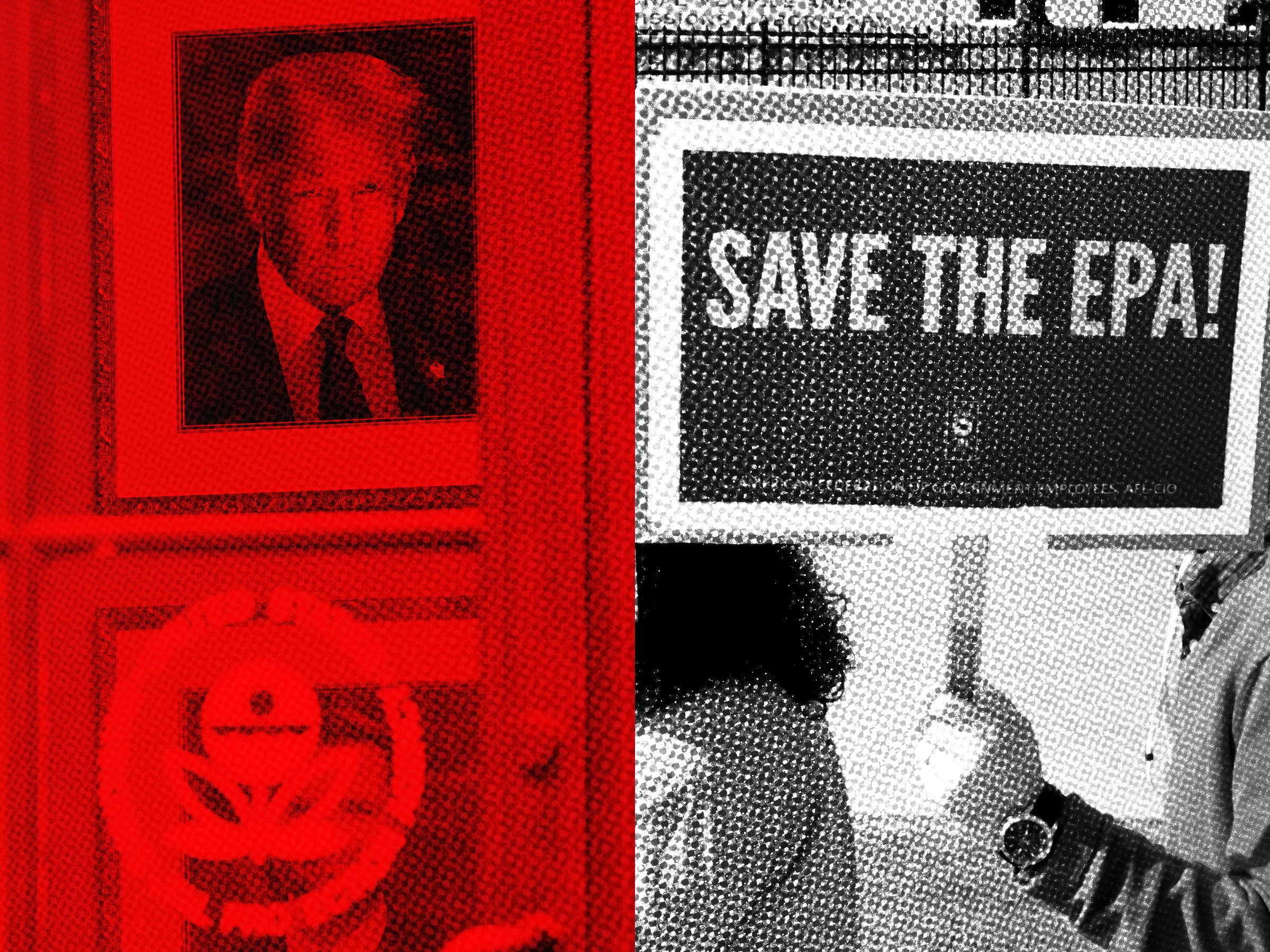WITH THE END of the US government shutdown in sight, disorganization still reigns at federal agencies. Workers at the Environmental Protection Agency tell WIRED that they have faced increasing chaos over the past five weeks.
In recent weeks, varied phases of furloughs have forced staff to go home in seemingly random waves. Some employees remaining at the agency are working on policies friendly to fossil fuel and industrial interests that are a priority of the administration, even as the rest of the government shuts down.
Others have had to sit on their hands, as the shutdown takes out colleagues with no notice—and remaining employees have little to no information as to what is coming next.
“We learn who is furloughed when we send an email to someone and get the out-of-office message, or we hover over names in Teams for people who are showing out of office,” one EPA worker tells WIRED. (This worker, and others in this story, were granted anonymity because they aren’t permitted to speak to the press.)
Some employees who are being kept are at work revising pollution rules, a core deregulatory goal of the administration. An employee at the Office of Air and Radiation confirmed to WIRED that their team, which is working on rule revisions in that office, is still being called in to work, while others in the office—including support staff like administrative assistants and operations workers—were sent home the week of October 20.
“Staff working in the regulatory part of the air office are still working,” the employee tells WIRED. “Lots of furloughs elsewhere. But we’re still working on deregulatory actions.” The New York Times reported in mid-October that other staffers working to repeal rules friendly to oil, gas, and coal interests were also being told to “press on.”
Around 4,400 employees, WIRED has learned, had been furloughed at the agency as of late October. According to the EPA’s shutdown plan, which was last updated in September, the agency employed more than 15,000 people as of October 1. In the plan, the agency lists just 1,734 employees expected to be retained in the event of a full shutdown. These employees would work on “significant agency activities” deemed crucial enough to be continued in a lapse, including Superfund activities, disaster assistance, criminal investigations, and the preservation of research.
Following a Sunday vote in the Senate, the government shutdown could end as early as this week.
OMB director Russell Vought, the public face of the government shutdown, has tried to use it as a way to further cut back the size of the federal workforce. But more than a month into the shutdown, workers at the EPA have mostly escaped the high-profile reductions in force and mass furloughs that have hit other agencies. Many workers are still coming in to do their jobs as the agency tries to continue business as usual. EPA administrator Lee Zeldin, meanwhile, has squarely blamed Democrats.
“We’ve been intentional and aggressive in establishing a structure to ensure EPA is focused on statutory obligations and Presidential priorities, not the overreach of the previous administration,” EPA spokesperson Mike Bastasch tells WIRED in a statement. “Congressional Democrats have chosen to shut down the government. If they want to re-open the government, they can choose to do so at any time.”
Not everyone still at EPA is working on deregulations, or even top administration priorities, however. A staffer working on civil rights cases in the administrator’s office says their team hasn’t received furlough notices, and that they are still coming in to work. “Our work is definitely not a priority of the administration,” they said.
Many employees working on the Superfund program, which is responsible for cleaning up toxic sites around the country, have also retained their jobs. A regional Superfund worker told WIRED that their team had been largely unaffected by furloughs. But even those workers are facing uncertainty.
In late October, supervisors informed the staff that if the shutdown continues, the funding source for Superfund staff paychecks would switch to a trust fund established to help finance the program, avoiding the need to furlough them entirely. But a week later, the administration had apparently changed its tune: Last week, the employee tells WIRED, leadership informed Superfund workers in their regional office that a decision had been made to not use the trust fund for payroll, and that staff should expect furloughs in the coming weeks.
“Everyone was shocked,” the employee says.
Walter Mugdan, a multi-decade EPA employee who last served as the head of one of the agency’s regional offices, says that the EPA is likely paying employees still coming to work with carryover funds from last year’s budget. (Zeldin told reporters last week that the agency has “a whole bunch of pots of carryover funding” that it was using.)
Still, multiple employees tell WIRED that the source of their paychecks has not been made clear to them. And unlike previous shutdowns, when the agency communicated clearly the timelines for how long it could stay open, workers say that they have no idea when the money will run out.
“They seem to keep finding change in the couch cushions to pay us, so who knows [what comes next],” says one employee.
The uneven furloughs have affected some employees’ work. “The scattershot furlough of regional staff is making it difficult for us to get anything done that requires input from those folks,” says the civil rights employee.
The Superfund employee who spoke to WIRED says that even though their team is still intact, the furloughs have affected regional staff who help them book travel to the sites they need to monitor. “It’s taking a long time to get travel approved,” they say.
The late October furloughs also hit workers who are part of a long-awaited, large-scale reorganization of how the agency does science. In May, agency leadership announced that it would be significantly changing the Office of Research and Development, the EPA’s independent scientific research arm. Many of the scientists from ORD were to be subsumed into a new office within the Office of the Administrator. Two former ORD employees tell WIRED that they were informed of their new positions hours before they were then given a furlough notice and sent home.
“Could be a method to the madness, but probably just disorganization,” says one EPA employee.
Zeldin was not clear with reporters last week as to a specific date for when carryover funding would run out, but he said that in the “first, second week of November, the agency would have no choice but to then move towards a third phase of implementing a lapse plan—and we don’t want to have to do that.”
Even EPA supervisors seem to be in the dark about what to expect next.
“I just don’t understand why they wouldn’t be able to tell specific groups when they would be furloughed if the shutdown continues [or] how many days of funding they have left,” says one employee. “I can’t think of any reasons other than they want to cause confusion and strife, or if they’re just improvising every day.”
“It’s been a hallmark of this [administration],” claims another worker. “Keep everyone in the dark as much as possible—sow chaos to minimize effectiveness as an agency.”




